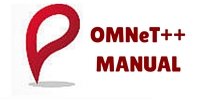Coordinated Multi-point (CoMP) transmission and reception is considered as a promising technique to combat inter-cell interference, enhance throughput, improve mobility, reduce handover interruption time, and also to increase spectrum efficiency. In this paper, we investigate and analyze the performance of uplink intra-site joint reception CoMP (JR-CoMP) for LTE-Advanced (LTE-A) systems. Both single user-MIMO (SU-MIMO) CoMP and […]
Read morePerformance of uplink joint reception CoMP with antenna selection for reducing complexity in LTE-A systems
Long Term Evolution Advanced (LTE-A) Release 12 allows direct communication among User Equipments (UEs). This is called Proximity Services (ProSe) or Device-to-Device (D2D) communication providing increased spectral efficiency and lower packet latency. As a drawback, interference aware scheduling for D2D communication is even more challenging than for a reuse-1LTE-A scenario. In this paper we formulate […]
Read moreThe Sleeping Cell problem is a particular type of cell degradation in Long-Term Evolution (LTE) networks. In practice such cell outage leads to the lack of network service and sometimes it can be revealed only after multiple user complains by an operator. In this study a cell becomes sleeping because of a Random Access Channel […]
Read moreCoordinated voltage control in distribution grids with LTE based communication infrastructure
In modern distribution grids voltage problems are likely to be more common and more significant, due to the high penetration of Distributed Generation (DG) that can vary their in-feed in short times. Coordinating these DGs, either in a centralized or distributed fashion, to maintain voltage at prescribed limits may be one effective solution. However, this […]
Read moreThe wide flexibility of LTE resource allocation scheme has led to the definition of various schedulers that attempt to maximize the quality of the service offered to the different users, depending on their channel conditions. Unfortunately, providing service guarantees in dynamic channel conditions typically requires a cost in terms of spectral efficiency of the transmission resource allocation. […]
Read more